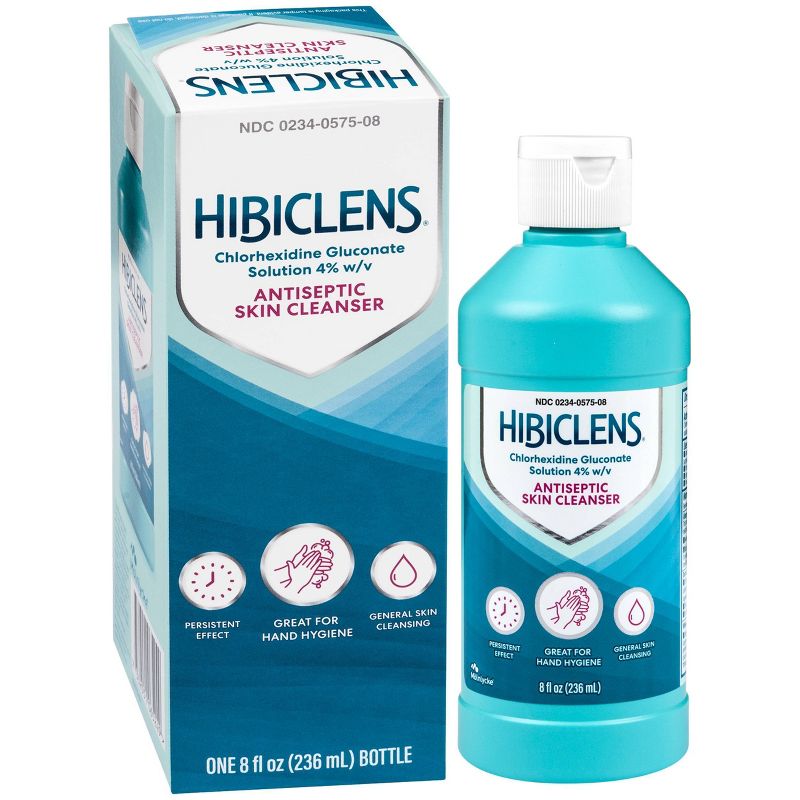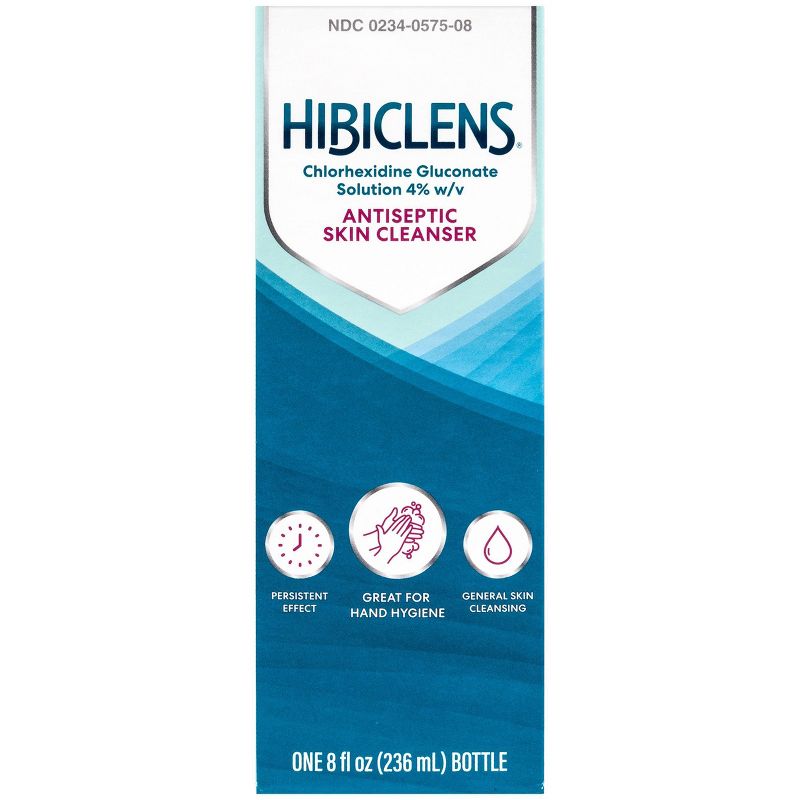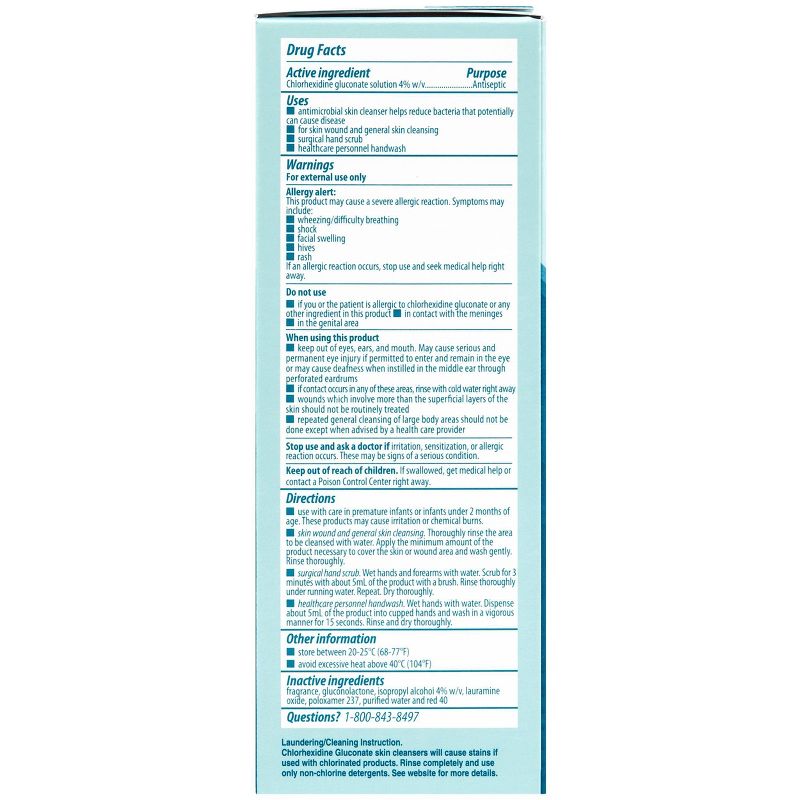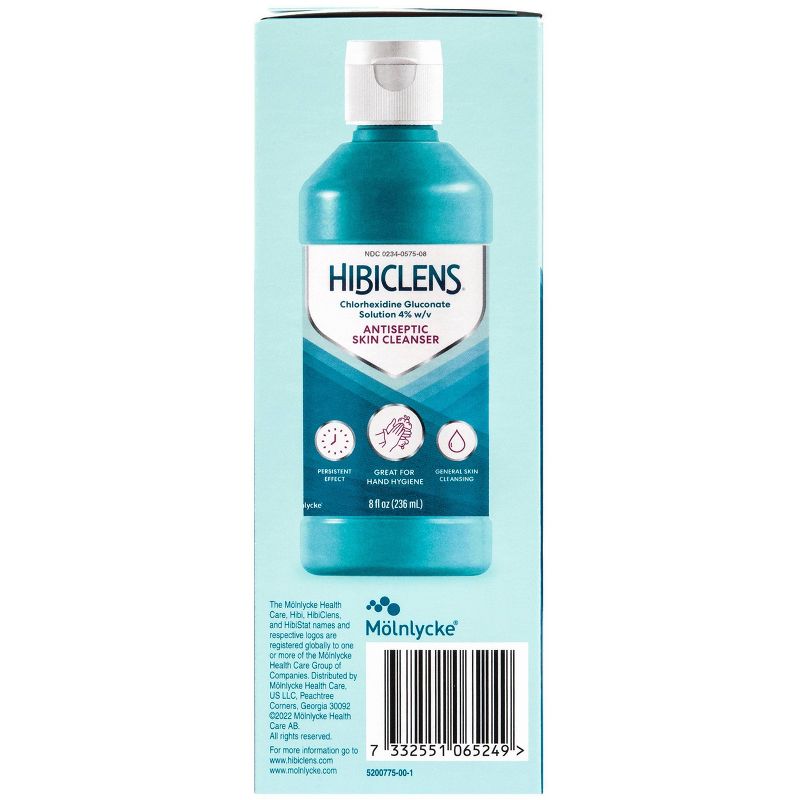Sponsored
Hibiclens Antimicrobial Antiseptic Soap and Skin Cleanser - 8 fl oz
Create or manage registry
At a glance
Sponsored
About this item
Highlights
- Begins killing germs on contact and provides lasting protection (1)
- #1 dermatologist and pharmacist recommended antibacterial soap (2)
- Great for hand hygiene
- Gentle enough for everyday use (3)
- Hibiclens is antibacterial, antiseptic and antimicrobial
Description
Hibiclens has been trusted by health care providers for over 40 years as a pre/post-operative antiseptic skin cleanser to help reduce the risk of infection. It’s strong enough to kill germs that live on the skin but gentle enough for routine family handwashing. Unlike regular soaps, Hibiclens not only begins killing germs immediately (1), it bonds safely with the skin and keeps on killing germs, even after washing. Its active ingredient, chlorhexidine gluconate provides extended protection against a wide range of bacteria that can cause infections (4) and leaves no sticky residue.
Whether you’re using it daily to protect your family from germs that live on the skin or as part of a pre/post-operative washing plan, you can trust Hibiclens! Make Hibiclens a part of your daily routine by keeping a bottle at sinks in your home, and make it a habit to wash your hands with it before heading out.
Hibiclens is for use only on the skin. Do not apply this medicine to deep cuts, scrapes, or open skin wounds. To use Hibiclens soap, apply only enough to cover the area you are treating. Wash the area gently, then rinse thoroughly with plain water. Please refer to Hibiclens Drug Facts label for full directions for use and indications.
1. Paulson, Daryl S. Persistent and Residual Antimicrobial Effects: Are They Important in the Clinical Setting? Infection Control Today 2005; Vol 9. No 4.
2. IQVIA ProVoice Survey, 12 month end Sep 2020.
3. PRACs Report #R05-0225
4. Denton, G. Chlorhexidine. In: Block S, ed. Disinfection, Sterilization, and Preservation, 4th Philadelphia: Lea & Febiger, 1991:274-89.3.T
Whether you’re using it daily to protect your family from germs that live on the skin or as part of a pre/post-operative washing plan, you can trust Hibiclens! Make Hibiclens a part of your daily routine by keeping a bottle at sinks in your home, and make it a habit to wash your hands with it before heading out.
Hibiclens is for use only on the skin. Do not apply this medicine to deep cuts, scrapes, or open skin wounds. To use Hibiclens soap, apply only enough to cover the area you are treating. Wash the area gently, then rinse thoroughly with plain water. Please refer to Hibiclens Drug Facts label for full directions for use and indications.
1. Paulson, Daryl S. Persistent and Residual Antimicrobial Effects: Are They Important in the Clinical Setting? Infection Control Today 2005; Vol 9. No 4.
2. IQVIA ProVoice Survey, 12 month end Sep 2020.
3. PRACs Report #R05-0225
4. Denton, G. Chlorhexidine. In: Block S, ed. Disinfection, Sterilization, and Preservation, 4th Philadelphia: Lea & Febiger, 1991:274-89.3.T
Additional product information and recommendations
Sponsored
Similar items
Loading, please wait...
Your views
Loading, please wait...
More to consider
Loading, please wait...
Featured products
Loading, please wait...



